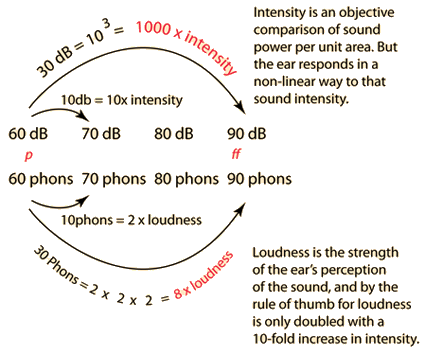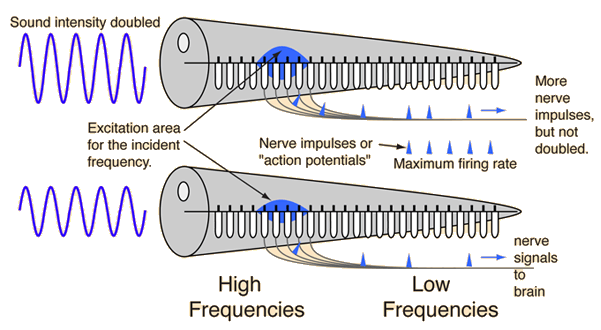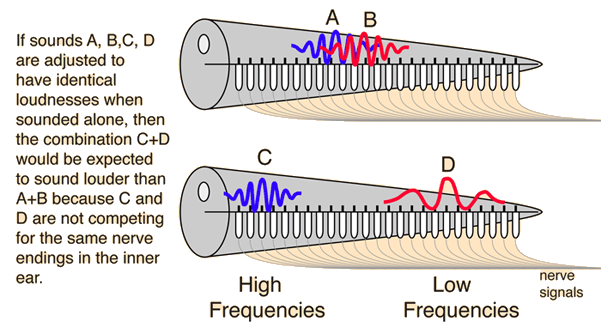Loudness
Sound loudness is a subjective term describing the strength of the ear's perception of a sound. It is intimately related to sound intensity but can by no means be considered identical to intensity. The sound intensity must be factored by the ear's sensitivity to the particular frequencies contained in the sound. This is the kind of information contained in equal loudness curves for the human ear. It must also be considered that the ear's response to increasing sound intensity is a "power of ten" or logarithmic relationship. This is one of the motivations for using the decibel scale to measure sound intensity. A general "rule of thumb" for loudness is that the power must be increased by about a factor of ten to sound twice as loud. To more realistically assess sound loudness, the ear's sensitivity curves are factored in to produce a phon scale for loudness. The factor of ten rule of thumb can then be used to produce the sone scale of loudness. In practical sound level measurement, filter contours such as the A, B, and C contours are used to make the measuring instrument more nearly approximate the ear.
 | Since "loudness" is a subjective measurement of perception, one must be careful about how much accuracy you attribute to it. But though ff is much louder than p in dynamic level, it is not 1000x louder, so one must attempt to develop a scale of loudness that comes closer to mapping your ear's perception. The "rule of thumb" for loudness is one way to attempt that. |
Loudness concepts
Hearing concepts
| HyperPhysics***** Sound | R Nave |


